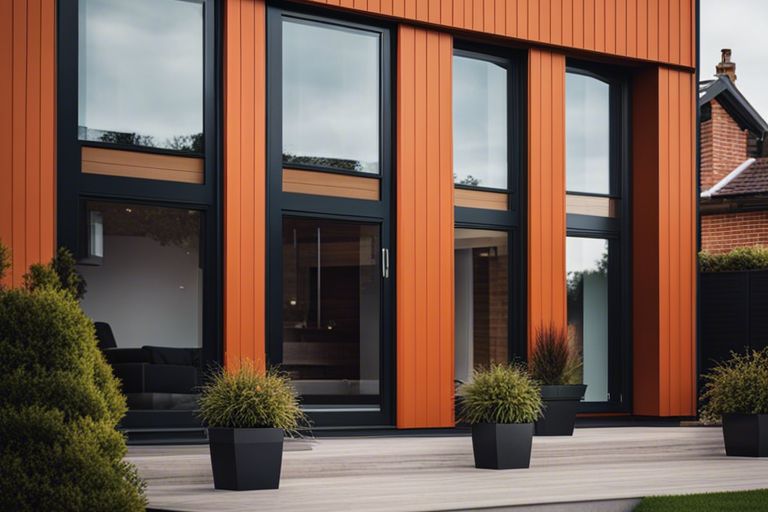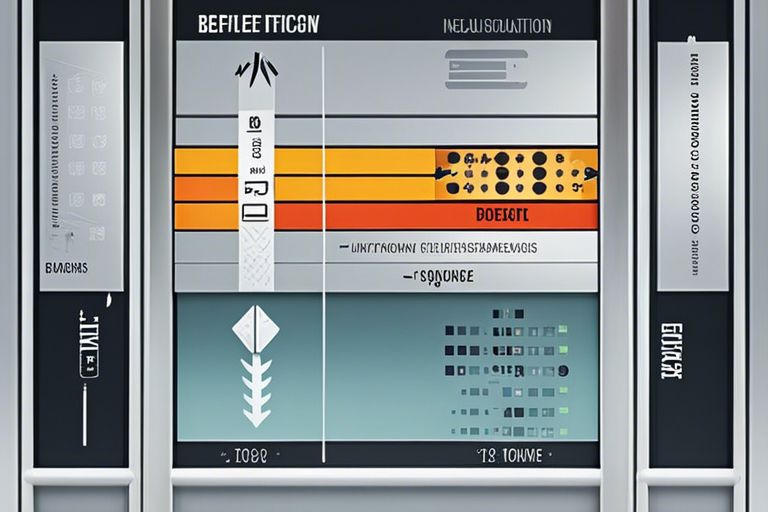Flat rooflights are an increasingly popular choice in modern architecture, offering a range of benefits that make them a valuable addition to any design. One of the key advantages of flat rooflights is the abundance of natural light they bring into a space, creating a bright and airy environment that enhances the overall aesthetics of a building. Additionally, flat rooflights can help reduce energy costs by maximising the use of natural light, thus decreasing the reliance on artificial lighting during the day. They also provide excellent ventilation options, improving air circulation and indoor air quality, creating a healthier and more comfortable living or working environment. Overall, flat rooflights are a versatile and practical architectural feature that can significantly enhance the aesthetics and functionality of any modern building.
Key Takeaways:
- Increased natural light: Flat rooflights allow more natural light to enter a space, creating a brighter and more inviting atmosphere.
- Modern aesthetics: Flat rooflights contribute to a contemporary and sleek architectural design, enhancing the overall look of a building.
- Energy efficiency: By maximising natural light, flat rooflights can help reduce the need for artificial lighting, saving energy and lowering utility costs.
Advantages of Flat Rooflights
Aesthetic Enhancements
Flat rooflights offer a sleek and modern aesthetic to any building, bringing in an abundance of natural light that can transform the ambience of a room. The clean lines and minimalistic design of flat rooflights complement contemporary architecture, creating a sense of spaciousness and airiness within the space.
Furthermore, flat rooflights provide an unobtrusive way to introduce more light into a room without compromising on privacy. By allowing sunlight to enter from above, flat rooflights can enhance the visual appeal of a space and highlight architectural details that may otherwise go unnoticed.
Improved Energy Efficiency
Installing flat rooflights can contribute to improved energy efficiency in a building by reducing the need for artificial lighting during the day. By maximising the inflow of natural light, flat rooflights help to lower energy consumption and decrease utility costs in the long run.
Moreover, flat rooflights are often designed with energy-efficient glazing that helps to regulate heat transfer, keeping the space cooler in summer and warmer in winter. This thermal performance not only enhances comfort levels but also contributes to sustainable building practices.
For additional energy savings, some flat rooflights can be equipped with rain sensors that automatically close the unit in case of inclement weather, preventing heat loss and potential water damage.

Installation and Maintenance Considerations
Professional Installation Processes
When it comes to installing flat rooflights in modern architecture, it is crucial to hire professionals who have experience and expertise in this specific area. Professional installation processes ensure that the rooflights are fitted securely, preventing any leaks or structural issues in the future. These experts will take into account factors such as roof material, drainage, and insulation to provide a seamless installation that complements the overall design of the building.
Additionally, professional installers will follow safety guidelines and regulations to guarantee a safe working environment. They will use the right equipment and techniques to complete the installation efficiently and effectively, ensuring that the flat rooflights not only look aesthetically pleasing but also function optimally for years to come.
Maintenance Tips for Longevity
Regular maintenance is essential to prolonging the lifespan of flat rooflights in modern architecture. To ensure longevity, it is recommended to clean the rooflights at least twice a year using a gentle detergent and water solution. Remove any debris or dirt that may have accumulated on the surface to prevent blockages and maintain optimal light transmission.
Inspect the seals and hinges of the rooflights regularly to check for any signs of wear or damage. Replace any worn components to prevent water ingress and maintain the integrity of the installation.
- Regular cleaning with mild detergent
- Inspect seals and hinges
Recognising and addressing minor issues early can prevent costly repairs in the future.
Integration with Smart Home Technology
In the realm of modern architecture, the integration of flat rooflights with smart home technology has become increasingly popular. This fusion of sleek design with advanced technology offers a range of benefits for homeowners looking to upgrade their living spaces.
Automation of Flat Rooflights
Automation of flat rooflights allows for convenient control of natural light and ventilation within a property. Through smart home systems, rooflights can be programmed to open and close at specific times or in response to various environmental factors. This level of automation not only enhances the aesthetic appeal of a space but also contributes to energy efficiency and overall comfort.
Synergy with Energy Management Systems
Flat rooflights seamlessly integrate with energy management systems to optimise the use of natural light and regulate indoor temperatures. By syncing with smart sensors and controls, rooflights can adjust their settings to maximise energy savings and create a more sustainable living environment. This synergy between rooflights and energy management systems is a key feature of modern architectural design that prioritises both efficiency and comfort.
Furthermore, the combination of flat rooflights with energy management systems offers homeowners greater flexibility and control over their living spaces. By actively managing natural light levels and ventilation, occupants can reduce reliance on artificial lighting and heating, leading to cost savings and a reduced environmental impact. This harmonious integration of technology and design showcases the potential for smart homes to enhance living standards in a sustainable and efficient manner.

Architectural and Environmental Impact
When it comes to modern architecture, flat rooflights play a crucial role in not only enhancing the aesthetics of a building but also in improving its environmental performance. By allowing natural light to flood the interior spaces, rooflights create a sense of openness and connection to the outdoors, promoting a healthier and more productive environment for the building occupants.
Contribution to Sustainable Design
Flat rooflights contribute significantly to sustainable design practices by reducing the need for artificial lighting during the day, thus lowering energy consumption. The abundant natural light provided by rooflights not only decreases reliance on electricity but also helps regulate circadian rhythms, leading to improved well-being for the occupants. Additionally, rooflights can be equipped with sensors and automated controls to further enhance energy efficiency.
Furthermore, rooflights aid in passive solar heating and cooling by allowing sunlight to penetrate the building in winter, contributing to natural heating, and by providing ventilation options for cooling in the summer. This passive design approach reduces the building’s reliance on mechanical heating and cooling systems, resulting in both energy and cost savings over time.
Compliance with Architectural Regulations
Flat rooflights not only offer architectural benefits but also help buildings comply with regulations regarding daylighting requirements and fire safety standards. The use of rooflights ensures that sufficient natural light penetrates deep into the building, meeting daylighting standards set by building regulations. Additionally, in the event of a fire, rooflights can serve as crucial points of escape and ventilation, enhancing the overall safety of the building.
It is important to note that rooflights must meet specific regulatory standards in terms of safety glazing, thermal performance, and resistance to impact. Compliance with these regulations ensures that the rooflights not only enhance the architectural design but also contribute to the overall safety and well-being of the building occupants.

The Benefits of Flat Rooflights in Modern Architecture
Flat rooflights offer numerous benefits in modern architecture, including increased natural light, enhanced ventilation, and a sleek and contemporary design. These rooflights create a seamless connection between indoor and outdoor spaces, promoting a sense of openness and airiness within a building. Furthermore, they can contribute to energy efficiency by reducing the need for artificial lighting during the day. Their minimalist design also complements a wide range of architectural styles, making them a versatile and popular choice among designers and architects. Overall, flat rooflights are a valuable addition to modern architecture, providing both aesthetic appeal and practical advantages.
FAQ
Q: What are flat rooflights?
A: Flat rooflights are modern architectural elements designed to bring natural light into a building through the roof. They are typically sleek, low-profile windows that lie flush with the roofline.
Q: What are the benefits of using flat rooflights in modern architecture?
A: Flat rooflights enhance the aesthetic appeal of a building by creating a seamless connection between indoor and outdoor spaces. They also maximise natural light, reduce the need for artificial lighting, and improve the overall ambience of a space.
Q: How do flat rooflights contribute to energy efficiency in buildings?
A: Flat rooflights help to reduce energy consumption by maximising natural light, which can lower the need for artificial lighting during the day. They also provide passive solar heating, helping to regulate indoor temperatures and reduce reliance on heating systems.






